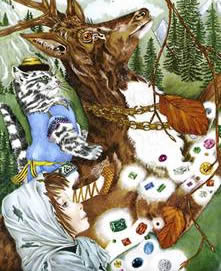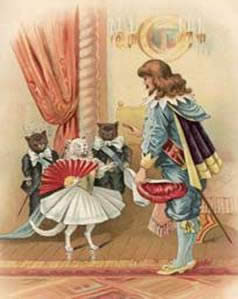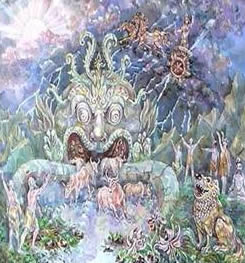|
|
Your Details
|
|
Your Details
GemSelect Newsletter - Gemstones and Fairy TalesGemstones are mentioned in many old fables and fairy stories. It is not surprising then that we associate gemstones with myths and magical stories. 
Sleeping Beauty (1845)
In most fairy tales gemstones will signify that the reader has entered a special place, maybe magical, certainly mythical with gemstone covered landscapes, gemstone encrusted mirrors, robes and goblets. The Brothers Grimm (1785-1863) are known throughout the world for their collection of old fairy tales. Later Disney would take on these very same stories and make them more famous. These included Cinderella (Aschenputtel), The Frog Prince (Der Froschkönig), Hansel and Gretel (Hänsel und Gretel), Rapunzel, Rumpelstiltskin (Rumpelstilzchen), Sleeping Beauty (Dornröschen), and Snow White (Schneewittchen). Disney changed the stories to make them appealing. You may be surprised to hear that in the original Sleeping Beauty (Basile 1575-1632) she was not awoken by a kiss but something far more sinister happened! The Brothers Grimm and Basile simply collected the tales from local peasants, village people and sometimes from aristocrats who had been told the stories by their servants. A similar way of gathering fairy stories was used by a Russian writer called Pavel Bazhov who spent years recording the stories of Ural Mountain miners. His famous collection was called 'The Malachite Casket', and was published in 1939. One of the fairy tales is known as "Silver Hoof" in Russia. 
Silver Hoof, Daryonka and Muryonka
It involves a mysterious goat (or in some tales a deer) who had a silver hoof on his right front leg. Whenever the goat stomps with this hoof, sparks fly and a gemstone is made, two stomps produce 2 gemstones, if Silver Hoof paws the ground a multitude of sparks fly and produce a cascade of many different colored gemstones. Blue sparks make sapphires, red sparks make rubies and white sparks make diamonds. The fairy tale involves a poor young orphan girl called Daryonka and her cat called Muryonka, who are adopted by an old hunter named Kokovanya. Kokovanya has been searching for Silver Hoof every winter for years. One night when the old man is away and Daryonka is alone with Muryonka, Silver Hoof arrives, talks secretly with Muryonka and then plays around excitedly, running and stomping, and so covering the old hunter's lodge with so many gemstones that the lodge cannot be seen. Kokovanya returns in time to see Silver Hoof and starts picking up the gems in his hat. Then, Silver Hoof runs off with Muryonka riding on his back. The price to pay for all the riches is that Silver Hoof takes away Daryonka's beloved cat. All that remained the next day, to show that Silver Hoof had been there, were green gemstones. Both the old hunter and the orphan girl were now rich but Daryonka missed her cat terribly. They never saw Muryonka or Silver Hoof ever again. It is significant that the Ural miners see the gems in the fable as a huge gift or reward, but at a cost. Life for these story tellers was very difficult. Countess D'Aulnoy (1650-1705) was a French fairy tale writer. One of her best known stories was "The White Cat". In the story, a young prince is on a quest for his father, the king, but he gets lost in a rain storm and seeks refuge. He sees bright lights in the distance and comes upon a huge gate to a magnificent castle. The gate is covered in red garnets, the light from which had led him to the castle. The castle has walls made of crystal and doors made from coral. The prince enters the castle and walks through hallways with walls made of lapis lazuli and covered in pearls, searching for the owner. His clothes are wet from the storm and so he finds dry clothes that are encrusted with emeralds. 
The White Cat (1890s)
In the castle the prince meets a mysterious and beautiful white cat with many servants and they become friends. When they dine together the plates are adorned with gemstones. The white cat wears strands of pearls and holds a gem encrusted goblet. The prince falls in love with the white cat and visits her in the castle three times. The white cat is really a princess cast under a wicked spell by fairies. But the prince doesn't know this until the cat asks him to chop her head off! Reluctantly, he agrees and this breaks the spell, and he asks the beautiful princess to marry him. They travel back to the king's castle on a royal carriage drawn by horses with shoes made of rubies and diamonds. The gems in this fairy tale symbolize royalty and great wealth and let us know that the characters, even the mysterious cat, are very special. Certainly, at the time the fairy tale was written (in the 1700s), only the rich could afford gems. Early fairy stories were often sad and violent. Indeed many of the Brothers Grimm tales had to be re-written before they were deemed suitable for children. The violence in the original stories was meant to scare children so they would be wary, e.g. the wolf hidden in sheep's clothing and the evil witch offering a poisoned red apple. The Ural tales by Bazhov often had warnings or hidden meanings and were meant to teach children about life. Fairy tales often tell of deceit, jealousy, wickedness and ambition. In India, a violent ancient fable tells us how gemstones were created. A Hindu demon called Vala had overthrown Indra, the god of thunder, and subdued all the other demi-gods. But he was tricked into playing the part of a sacrifice in a mock ritual. Once Vala was helpless, the other gods killed him and chopped his body into pieces. Since Vala had originally agreed to participate in the sacrifice, his body was now pure, and so when his body parts fell to Earth they became gemstones. 
The Legend of Vala
Drops of his blood became rubies, his skin turned into yellow sapphires, his eyes became blue sapphires and his bones shattered into diamonds. Vala's teeth fell into the oceans and landed on oysters where they became pearls. His intestines were also thrown into the sea and turned into coral. Vala's bright green bile became emeralds and his fat turned into jade or quartz. Finally even Vala's last war cry that echoed around the heavens as he was killed was transformed into cat's eyes. The significance of the story is sometimes given a medicinal explanation. Gemstones are often used for healing in traditional Hindu belief systems. Since the gemstones were said to be from parts of a god they are believed by some to possess special powers. Rubies, Vala's blood, are thought to cure blood diseases, yellow sapphires are used for skin afflictions, and so on. The Tales of The Arabian Nights, (said to have been invented by a princess on her wedding night to stop her new husband from killing her!) also include a few stories with gemstone references. If you know of any other interesting fairy stories involving gemstones please do let us know. Keep up with our new arrivals before they hit the newsletter by joining our thousands of fans and followers on our social networking pages. We love interacting with our customers - you can visit us on Tumblr, LinkedIn, Twitter, Facebook or Pinterest! To ensure you can receive our emails, please be sure to add help@gemselect.com to your list of safe contacts, or you add us into your email address book! Please feel free to contact us with any questions, comments and queries! We respond to each and every email we receive. Happy Gem Hunting! |
